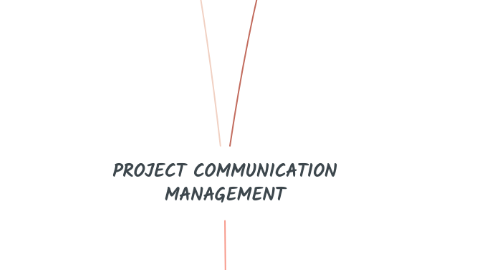
1. Plan Communication Management
1.1. INPUTS
1.1.1. Project Management Plan
1.1.2. Stakeholder Register
1.1.3. Enterprise Environmental Factors
1.1.4. Organizational Process Assets
1.2. TOOLS & TECHNIQUES
1.2.1. Communication requirement analysis
1.2.2. Communication Technology
1.2.2.1. Urgency
1.2.2.2. Availability
1.2.2.3. Ease of use
1.2.2.4. Project team specific work managable
1.2.2.5. Sensitivity of information
1.2.3. Communication Vehicles
1.2.3.1. Team meeting minutes
1.2.3.2. Project document
1.2.3.3. Stakeholder assessments
1.2.3.4. Brainstorming sessions
1.2.3.5. Charter
1.2.3.6. Communication plan
1.2.3.7. Requirement gathering sessions
1.2.3.8. Requirement documents
1.2.3.9. Risk register
1.2.3.10. Issues log
1.2.4. Communication Models
1.2.4.1. Sender encode Messages and decodes to Receiver
1.2.4.2. Receiver encode Messages by showing response and decodes back to Senders.
1.2.5. Communication Methods
1.2.5.1. Interactive communication
1.2.5.2. Push communication
1.2.5.3. Pull communication
1.2.5.4. Formal vs. Informal
1.2.5.4.1. Formal - structured communication. E.g Project Charter, Project Plan, Budget, Meeting Minutes, etc.
1.2.5.4.2. Informal - less structured communication, conversation through emails & phone, no historical records.
1.2.6. Meetings
1.2.6.1. Use an agenda.
1.2.6.2. Distribute important documents.
1.2.6.3. Team project should be prepared for the meetings.
1.2.6.4. Facilitators needs to establish leadership of meeting.
1.2.6.5. Make some ground rules.
1.2.6.6. Minutes of meeting must be created and available.
1.3. OUTPUTS
1.3.1. Communication Managemet Plan
1.3.2. Project Document Update
2. Manage Communication
2.1. INPUTS
2.1.1. Communication Management Plan
2.1.2. Work Performance Report
2.1.3. Enterprise Environment Factors
2.1.4. Organizational Process Assets
2.2. TOOLS & TECHNIQUES
2.2.1. Communication Technology
2.2.2. Communication Channels
2.2.2.1. Formula for computing communication channels : [N x (N-1)]/2, as N = number of members.
2.2.3. Communication Models
2.2.4. Communication Methods
2.2.4.1. Verbal vs Non-verbal
2.2.4.1.1. Verbal - The meaning of words to be expressed to convey the message.
2.2.4.1.2. Non-Verbal - How words is expressed and body language accompanying expression.
2.2.4.2. Communications through Learned Patterns
2.2.4.2.1. Patterns of words are important as to avoid miscommunication and misunderstanding, and prevent from wrong responses towards the project.
2.2.5. Communication Skills
2.2.5.1. Know the audience
2.2.5.2. Know the content
2.2.5.3. Be specific
2.2.5.4. C3 - Clear, Concise, Complete
2.2.5.5. Practice Dynamic Learning
2.2.5.6. Think proactively
2.2.5.7. Be genuine
2.2.5.8. Control communication
2.2.5.9. Listen & control non-verbal (Body Language)
2.2.5.10. Ask good questions
2.2.6. Information Management System
2.2.7. Performance Reporting
2.3. OUTPUTS
2.3.1. Project Communication
2.3.2. Project Management Plan Updates
2.3.3. Project Document Updates
2.3.4. Organizational Process Assets Updates
3. Control Communication
3.1. INPUTS
3.1.1. Project Management Plan
3.1.2. Project Communications
3.1.3. Issues Log
3.1.4. Work Performance Data
3.1.5. Organizational Process Assets
3.2. TOOLS & TECHNIQUES
3.2.1. Information Management Systems
3.2.2. Expert Judgement
3.2.3. Meeting
3.3. OUTPUTS
3.3.1. Work Performance Information
3.3.2. Change Requirements
3.3.3. Project Management Plan Updates
3.3.4. Project Document Updates
3.3.5. Organizational Process Assets Updates
3.3.6. Performance Reporting (Status Report)
3.3.6.1. Past performance
3.3.6.2. Project forecasts
3.3.6.3. Status on issues
3.3.6.4. Work completed
3.3.6.5. Changes approved
3.3.6.6. Other relevant information
